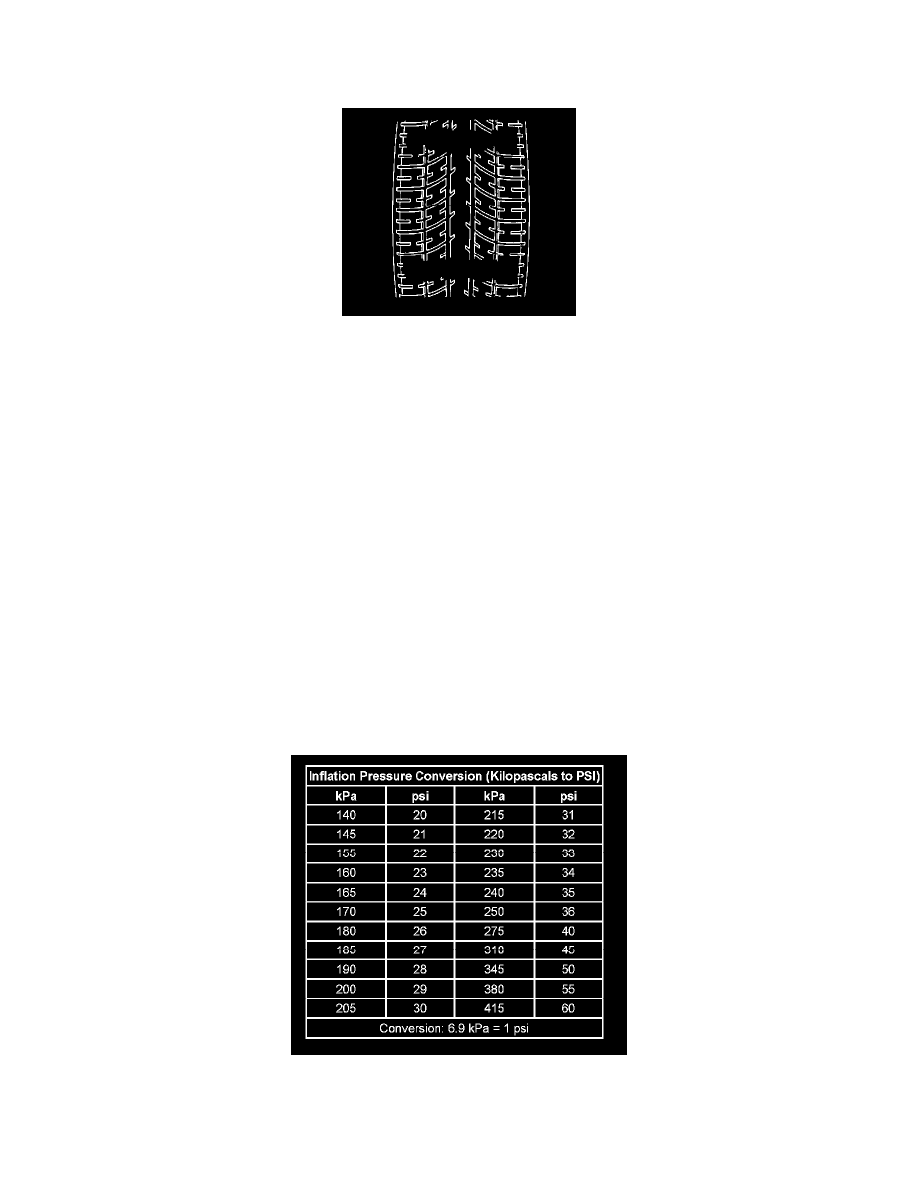Rainier AWD L6-4.2L VIN S (2005)

Tires: Description and Operation
Tread Wear Indicators Description
Tread Wear Indicators Description
The original equipment tires have tread wear indicators that show when you should replace the tires.
The location of these indicators are at 72 degree intervals around the outer diameter of the tire. The indicators appear as a 6 mm (0.25 inch) wide
band when the tire tread depth becomes 1.6 mm (2/32 inch).
Tire Inflation Description
When you inflate the tires to the recommended inflation pressures, the factory-installed wheels and tires are designed in order to handle loads to the
tire's rated load capacity. Incorrect tire pressures, or under-inflated tires, can cause the following conditions:
^
Vehicle handling concerns
^
Poor fuel economy
^
Shortened tire life
^
Tire overloading
Inspect the tire pressure when the following conditions apply:
^
The vehicle has been sitting at least 3 hours.
^
The vehicle has not been driven for more than 1.6 km (1 mile).
^
The tires are cool.
Inspect the tires monthly or before any extended trip. Adjust the tire pressure to the specifications on the tire label. Install the valve caps or the
extensions on the valves. The caps or the extensions keep out dust and water.
The kilopascal (kPa) is the metric term for pressure. The tire pressure may be printed in both kilopascal (kPa) and psi. One psi equals 6.9 kPa.
Inflation Pressure Conversion (Kilopascals to PSI)
Tires with a higher than recommended pressure can cause the following conditions:
^
A hard ride
^
Tire bruising
